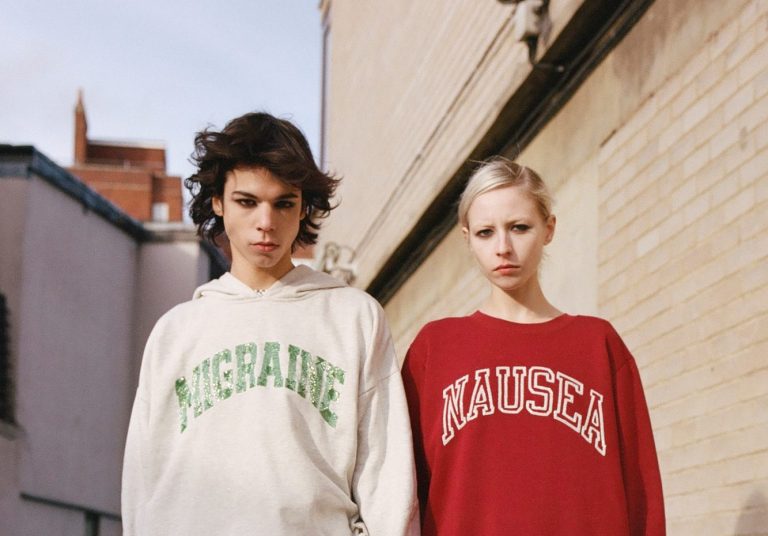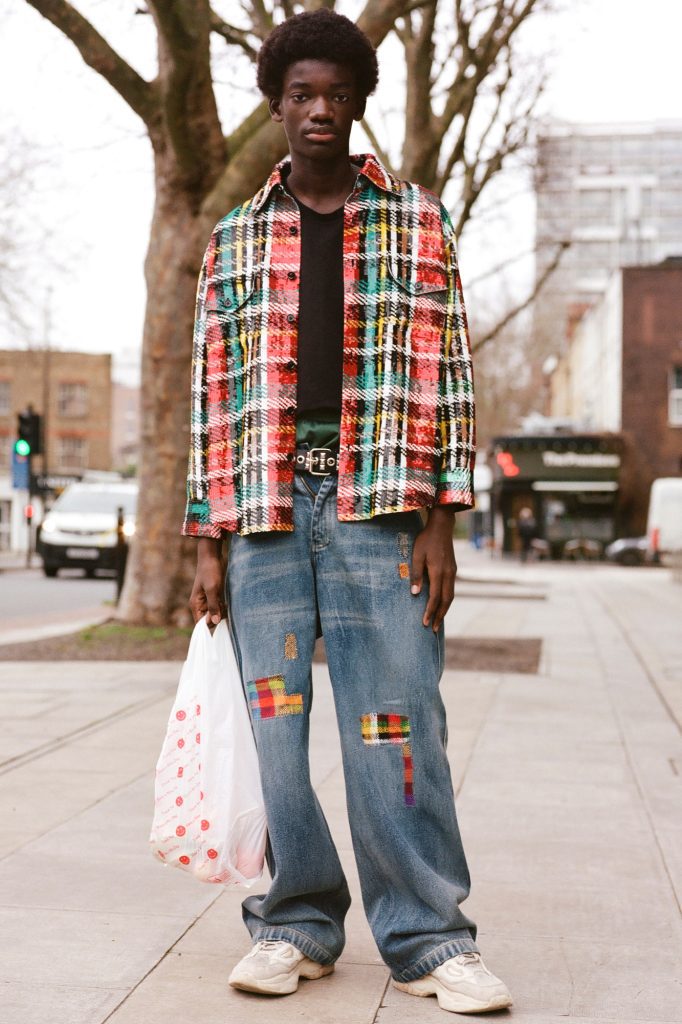
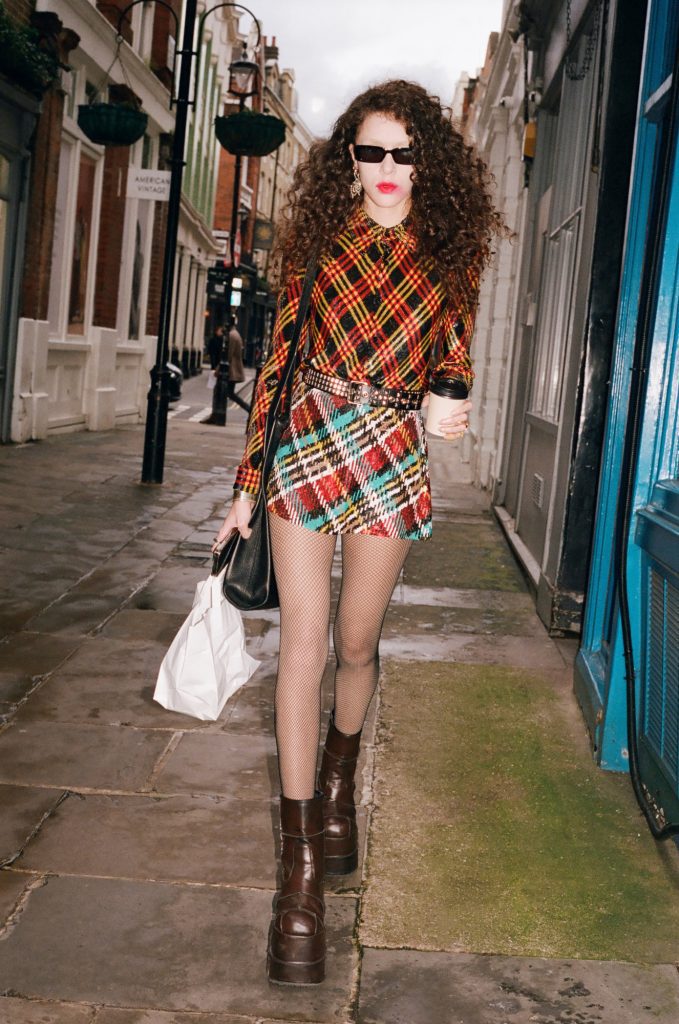
In the world of fashion, few names are as synonymous with innovation and unapologetic self-expression as Ashish Gupta. Known for his signature sequins, playful patterns, and a deep connection to his cultural roots, Gupta has carved out a unique space in the industry, blending high fashion with the ethos of slow, handcrafted luxury. As his brand approaches its third decade, Ashish speaks about the inspirations behind his latest collection, the importance of community, and how he continues to find joy and magic in an ever-changing world.
hube: Your career has spanned over two decades. How do you stay inspired and continue to innovate season after season?
Ashish Gupta: I try to enjoy the creative part of it because I think if you don’t enjoy it, it’s hard to stay inspired or innovate. Running a small business is difficult, of course, but you have to try not to sweat the small stuff and focus on the bigger picture. It’s important to have a sense of humor about it, not to take everything so seriously.
It doesn’t get easier every season, though, because every season you want to do something new and interesting, so you have to keep finding things that inspire you. I never really stop looking for inspiration – it’s like second nature. It’s not really a conscious effort, but you immediately register when you see something interesting. It could be the way someone is wearing something on a train, a set in a movie, or an object in a junk shop. Inspiration is all around, and if something resonates, I usually make a note of it, whether visual or written, and file it away for future use.
h: Your collection In Pursuit Of Magic is infused with themes of joy, anger, and humor. What inspired this unique blend of emotions?
AG: I think it’s just where I was emotionally when I was designing it. I continue to feel a lot of sadness and anger with the state of the world today, and in a way, joy becomes a kind of resistance. It’s hard to feel positive sometimes when there’s so much that feels wrong.
As a creative person, I’m always in what might be an idealistic ‘pursuit of magic’. You’re always trying to capture something that isn’t easily definable – call it magic, a sense of euphoria, delight, or escapism. It’s important for me to capture a feeling like that. It’s what draws you to a piece of clothing and what makes you want to wear it.
h: Knitwear played a significant role in your recent designs. What drew you to explore this category, and how did you collaborate with Shradha Kochhar to infuse heritage techniques with new details?
AG: I’ve played with knitwear before and really enjoyed it. I like the community aspect of knitting and the craft element. My grandmother used to hand-knit little sweaters for me as a child, and they always had a little ‘scene’ on them. One had a toy train knitted around the sweater on a little track, and another had a teddy bear in a bow tie. I still have those sweaters, and I treasure them.
For me, knitwear is deeply intertwined with feelings of childhood and memories. There’s a comfort element to it. I love the idea of a jumper as a handmade object of love – it echoes how I see my embroidered pieces. I’ve known Shradha for years, from when she interned with me one summer. She’s such a wonderful artist, and I really love what she does. We collaborated on some knitwear a few years ago, and when we were both in India at the same time, it felt like the perfect opportunity to work together again. It’s wonderful to be able to do this with her.
h: Your recent work appears to highlight the significance of community and environment. Could you delve deeper into how your surroundings and relationships have impacted the creative journey behind this collection?
AG: The community around me is incredibly important. That doesn’t just mean those who wear my clothes, but also those who inspire me – my team, everyone who makes my clothes, those who’ve worked with me from the beginning, and especially my mother, who continues to be a huge influence on my work and life. It’s really hard to run a small independent fashion business without having strong relationships with those around you. For example, I met Esme Young when I did my Master’s degree at Central Saint Martins in 2000, and she still does my pattern-making to this day.
With this recent collection, I wanted to create a sense of community, to reflect the love I have for those who wear my clothes and support me. My garments are hand-embroidered by skilled artisans in my workshop in India. With around 50 embroiderers, it’s a personal working environment – I know everyone there, and their work is identifiable in individual garments. I’m deeply involved in how a textile is made, how a garment is constructed and finished, and who works on it. Every piece is completely embroidered and finished by hand – every single sequin is stitched on by hand – so no two pieces are identical. This is slow fashion with an invested production model. Each garment is made-to-order with very limited production. Because of the time and skill involved in their creation, buyers consider them investment pieces, meant to be worn for a lifetime and passed down or sold on.
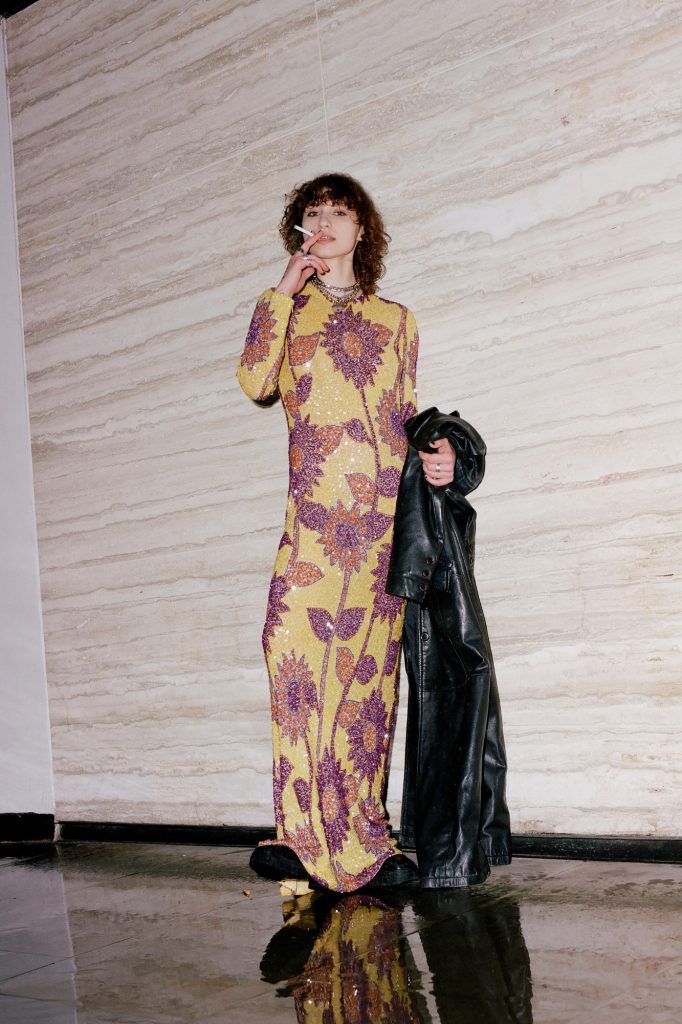
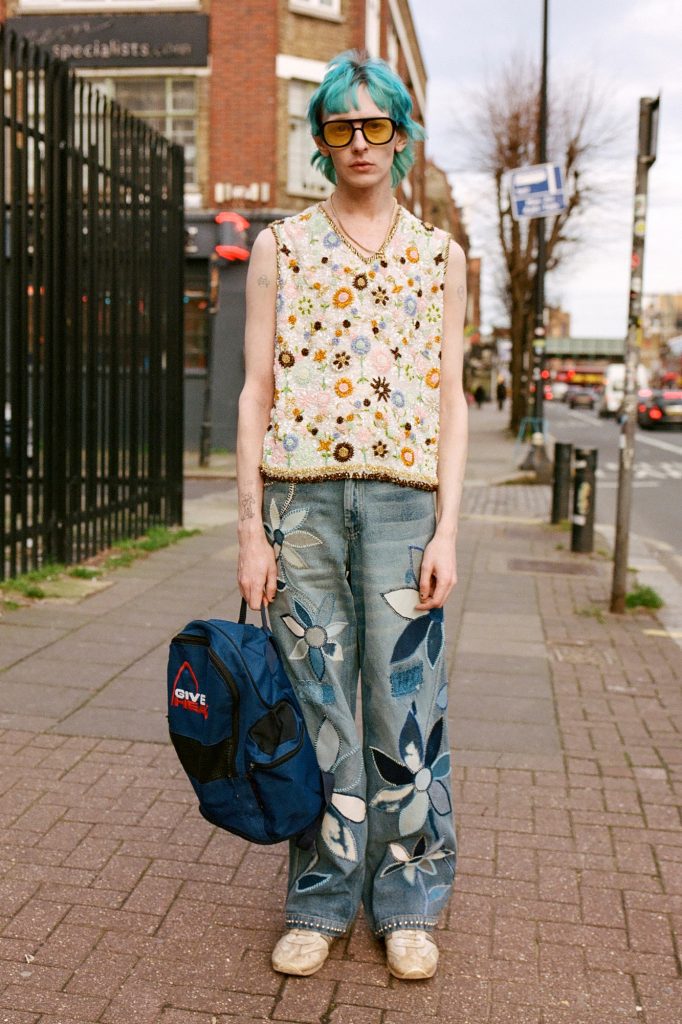
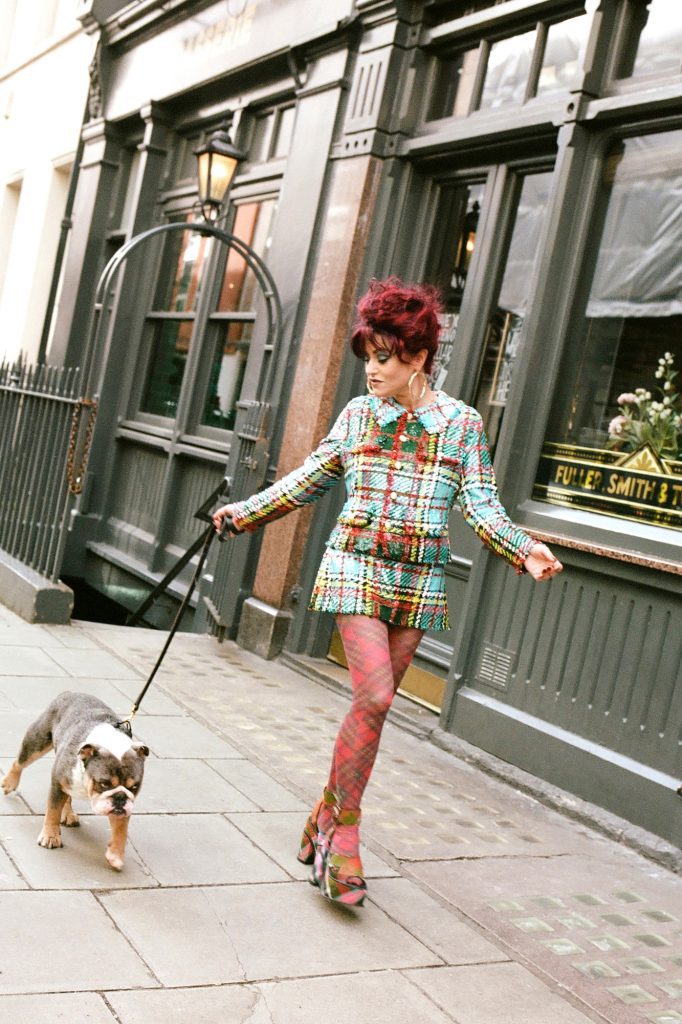
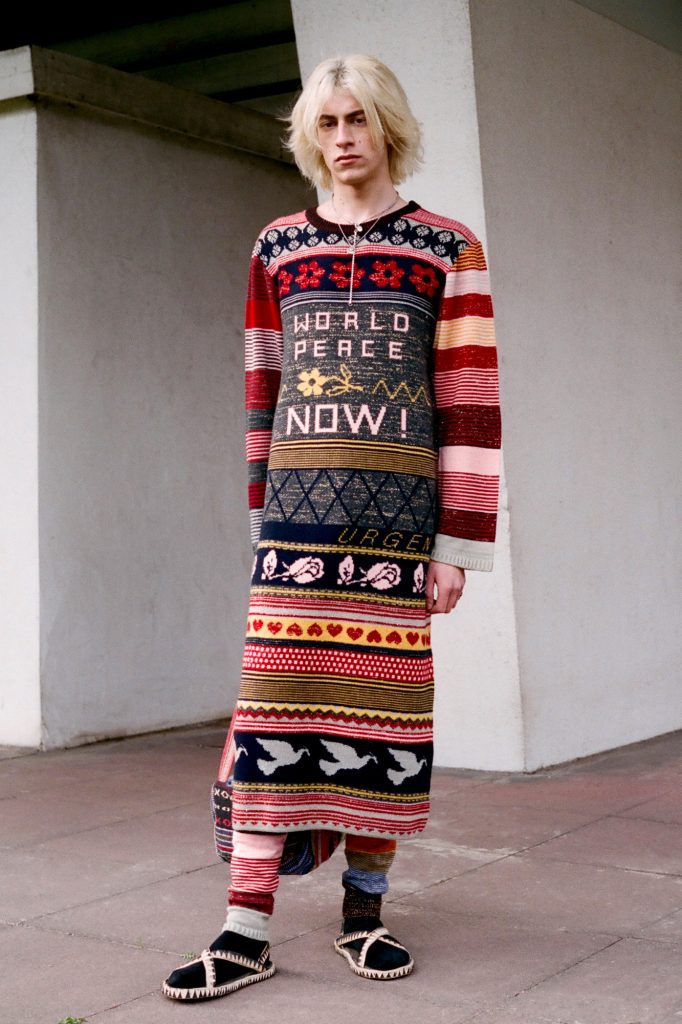

h: Your photo shoot featured friends and familiar locations in London. How did these personal connections and nostalgic settings contribute to the storytelling aspect of your collection?
AG: I wanted the pictures to have a real connection with London, which has been my home since I was in my 20s, and where I’ve spent most of my adult life. London has changed a lot since Brexit – the DNA has shifted. And after the pandemic, so much of the city disappeared; so much nightlife is gone. It was really important for me to remind myself that, despite all that, I love this city. It’s been a difficult time, and you can lose that sense of belonging. In some ways, this collection is a love letter to London and those I really have a connection with. It’s a way of trying to connect the past to the present and asking myself how that shapes the future.
h: The Angry Homosexual biker jacket and other pieces in your collection carry strong messages. Could you discuss the significance of these messages and how they fit into your overall creative vision?
AG: That specific message was a bit of self-reflection. It was inspired by a line from Fran Lebovitz: ‘There’s nothing better for a city than a dense population of angry homosexuals’. Another piece, ‘Are you serious?’ expresses my daily confusion with the world right now – like a constant ‘WTF, can you believe this is actually happening?’ moment.
I also love the World Peace sweater dress – although, again, I can’t believe this still needs to be said. It’s an important message, especially now.
h: Diversity and inclusivity have always been important aspects of your brand. How do you ensure these values are reflected in your designs and business practices?
AG: It’s about the people you surround yourself with. Diversity is about much more than just the colour of someone’s skin – it’s about age, gender, life experiences, culture. There’s so much nuance to it. I try to ensure I have the most diverse castings for shows, and throughout any creative process, I make sure to listen to and talk with people who have different opinions and knowledge than I do. I divide my time between London and Delhi, so it’s nice to have a constant dialogue of culture and representation through the work I’m doing.
h: Looking ahead, what are your aspirations and goals for the future of your brand, and how do you plan to navigate the ever-changing landscape of the fashion industry?
AG: I try not to plan too far ahead because, 1. nothing ever really goes to plan, and 2. it’s much more fun to be spontaneous – you never know what opportunities are waiting around the corner. As an artist, I think it’s nice to explore other creative paths. I love designing homeware, and I practice photography. Moving within other creative fields is so energising – it keeps me from getting bored.
As far as fashion goes, I feel very lucky that I’ve been able to sustain an independent business for over twenty years now. I hope to keep it that way.
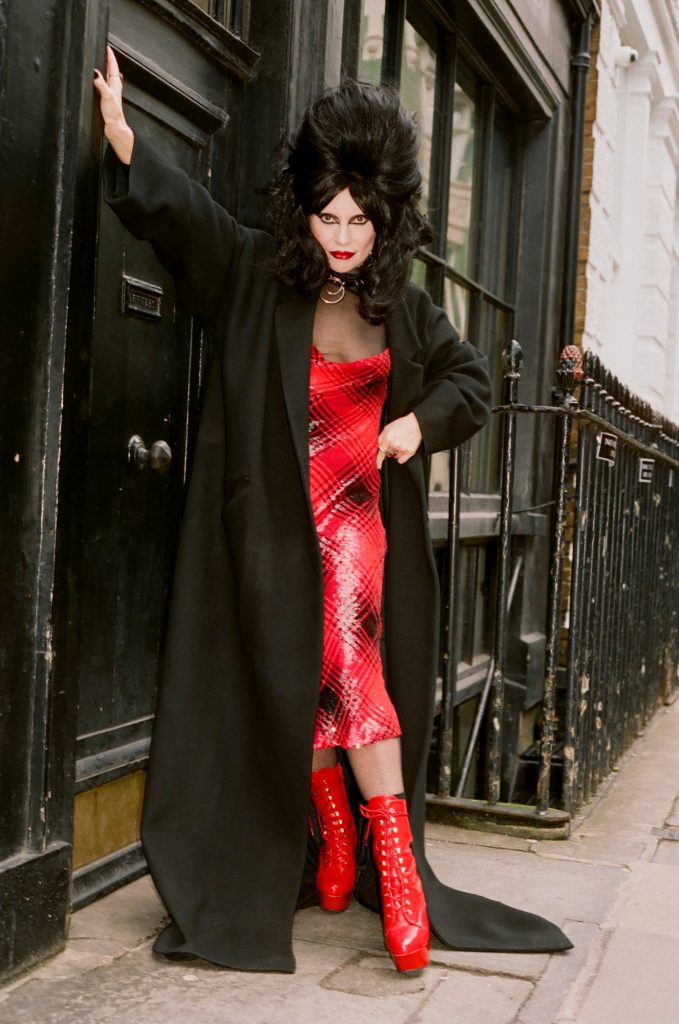
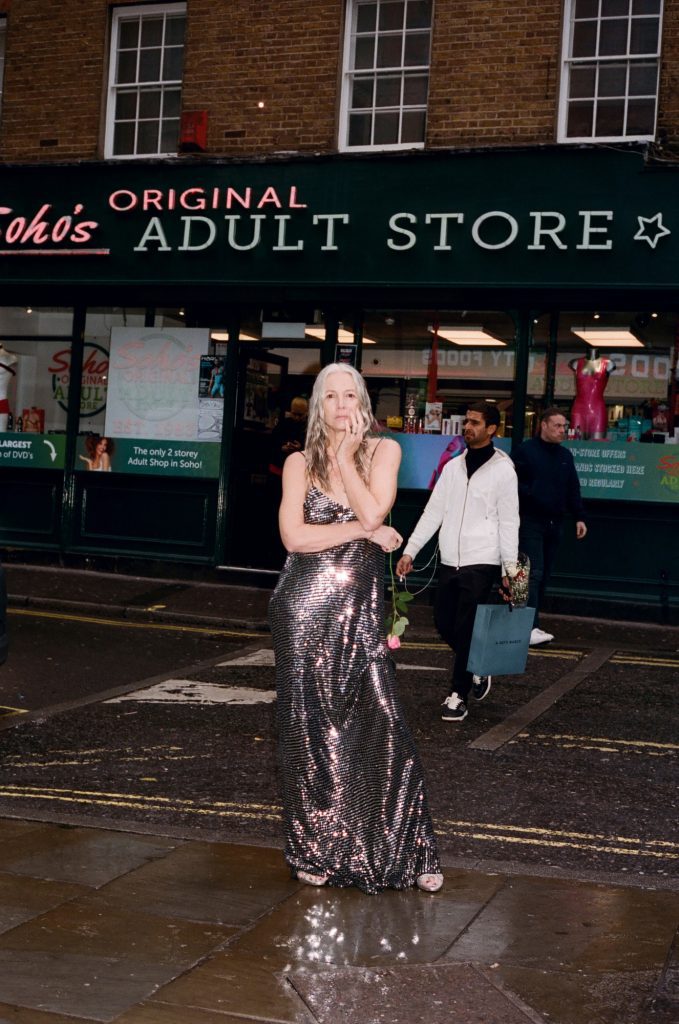
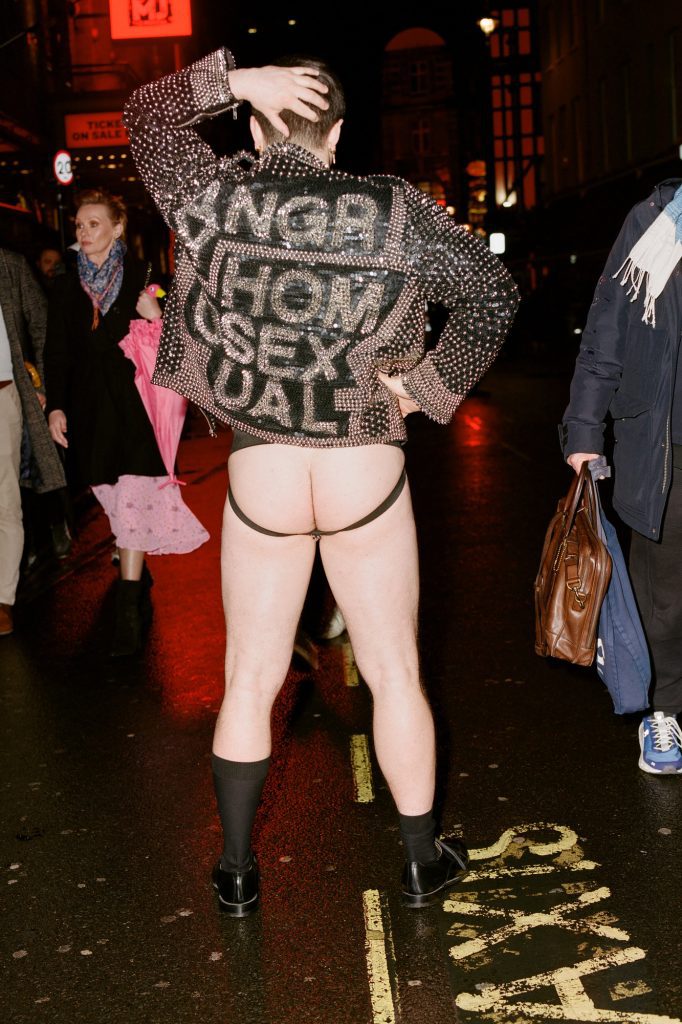
Photography by HAZEL GASKIN courtesy of ASHISH GUPTA
